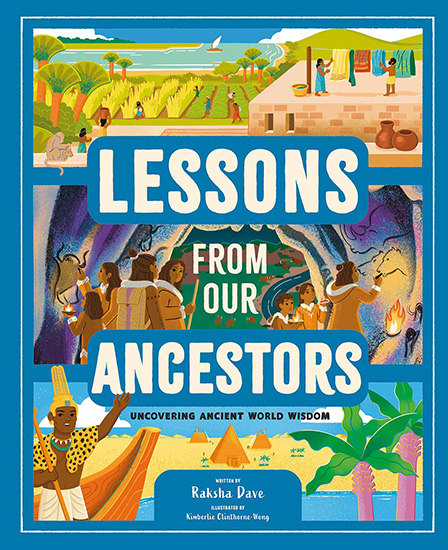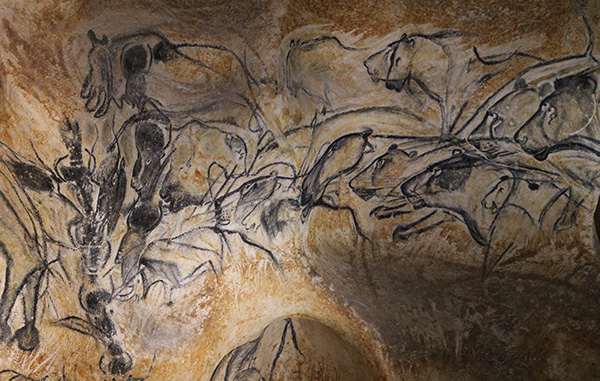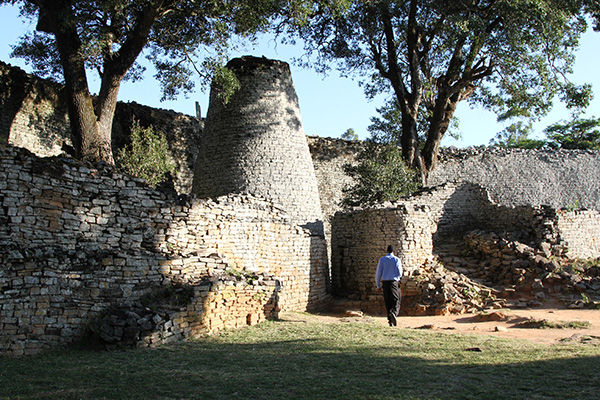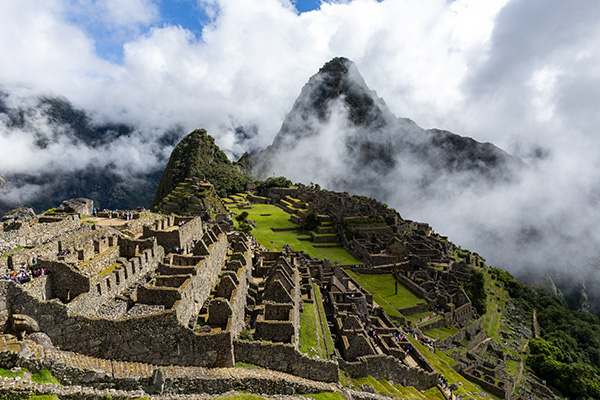Raksha Dave, Lessons from Our Ancestors: Uncovering Ancient World Wisdom, Magic Cat Publishing, 2023, 64 pages, $22.99 hardcover
Raksha Dave, born in 1977, is a Pakistani living in Great Britain who is president of the Council for British Archaeology. She has appeared in British archaeology programs, and her Wikipedia entry calls her an “advocate for increasing the diversity of archaeologists.” Lessons from Our Ancestors is her first book, and is aimed at young people.

Version 1.0.0
The book has an introduction, 14 short chapters on various past societies, answers to questions young people ask about the archaeology, and a glossary. It would be hard to find anything to criticize in the basic concept of a book like this, but a few chapter titles raise eyebrows:
Australia’s First Peoples Were Conservationists
Women and Children Painted the Chauvet Cave
Gender Equality Blossomed at Çatalhöyük
Mohenjo-Daro Was a Sustainable City
Women Warriors Thrived in Ancient China
Black Pharaohs Ruled Ancient Egypt
Great Zimbabwe Defied Colonial Ideology
Machu Picchu Was Built on Migration
The reader may be forgiven for suspecting from these headings that the whole book is anti-white nonsense, but that is not really the case. Just three of the 14 chapters are about Europeans, and they do not show any special animus against their subjects. So, by contemporary standards, the book is not especially hostile to whites; it merely sees ancient white societies through the same rose-tinted glasses as past non-white societies, making all of them out to be wonderful exemplars of currently fashionable ideals.
How to mislead without actually lying: the Chauvet Cave
It is not clear that the author is deliberately lying. Let us consider the chapter on the Chauvet Cave. The most obvious point to make about this paleolithic site in the south of France, first discovered in 1994, is that we have no idea who painted it, except that they must have been people living in the area around 35,000 years ago. So the bald statement that “women and children painted the Chauvet Cave” clearly goes beyond what the evidence demonstrates. It may not even be completely false, but it is mere hypothesis.

Painting in the Chauvet cave. (Credit: Album / Fine Art Images via ZUMA Press)
What evidence does Mrs. Dave offer to support her claim?
At least 75 percent of the handprints analyzed from all Paleolithic caves in France belonged to women and children, overturning the idea that Europe’s first artists were men. We know this because archaeologists measured the size and finger lengths of each hand. Women mostly have ring and index fingers of about the same length, whereas men’s ring fingers tend to be longer than their index fingers.
This may be true, but it doesn’t tell us who made the paintings. They are widely understood to depict the animals killed by ancient hunters. For this reason, Mrs. Dave says, “historians assumed that the artists must have been male, because they believed only men were hunter-gatherers.” Most specialists believe that ancient men were generally hunters while women were gatherers. That was the pattern observed among the Bushmen of the Kalahari and other modern hunter-gatherers. But Mrs. Dave writes:
Alongside their artistic work, Aurignacian women were big-game hunters. Hunting was important for survival, and so participation from everyone in the group made good evolutionary sense for many hunter-gatherer groups.
Gathering was even more important for survival. Hunting is difficult and dangerous, and most ancient hunts probably ended in failure. Day-to-day survival depended on plants and berries collected primarily by women. Once in a while, men would kill a big animal and the entire tribe would gorge on meat for several days. Then it was back to relying on the plant food.
Of course, it is possible that ancient women played some supporting role in hunting, but conscientious archaeology must distinguish between data and interpretation. That is what Mrs. Dave fails to do.
As for the other two chapters on Europeans, we learn that the Vikings were peaceful traders and that women were the star performers at the ancient Olympics (they did not participate, and married women were not allowed even as spectators).
“Black Pharaohs Ruled Ancient Egypt”
Mrs. Dave’s chapter title “Black Pharaohs Ruled Ancient Egypt” is not absolutely untrue, but she must have known it would mislead young readers.
The long, complex history of ancient Egypt down to its conquest by Persia in 525 BC is conventionally divided into nine periods known as 1) Predynastic, 2) Early Dynastic, 3) Old Kingdom, 4) First Intermediate, 5) Middle Kingdom, 6) Second Intermediate, 7) New Kingdom, 8) Third Intermediate, and 9) Late.
The Predynastic Period includes the entire era from the first human settlement of the Nile Valley until about 3100 BC. The Early Dynastic and Old Kingdom periods were the most fruitful and innovative eras, and are dated to about 3100-2686 BC. The three intermediate periods were times of chaos and political turmoil, and show little cultural advance. The Middle Kingdom and New Kingdom were eras of relative stability and prosperity, but did not advance culturally much beyond the Old Kingdom. Many Egyptologists call this a clear case of cultural stagnation, at least after the Old Kingdom.
During the more than two millennia of ancient Egyptian civilization, black Africans inhabited the land of Kush (also known as Nubia) directly to the south. They have left us plentiful material remains, many clearly influenced by the artistic styles and traditions of Egypt. The influence of Kush on Egypt is harder to establish, since it was a less advanced society. It is extremely likely that the black Kushites were less intelligent on average than the ancient Egyptians, who were of Near Eastern rather than Sub-Saharan stock. (Modern Egyptians have more Sub-Saharan admixture.)
What gives Mrs. Dave’s assertion about black pharaohs a grain of truth is that toward the end of the turbulent Third Intermediate Period — among the least culturally interesting — Kushite rulers succeeded in asserting control over Egypt for a bit less than a century, from 744 to 656 BC. Historians refer to this period as Egypt’s 25th dynasty.
While the rulers were indeed racially black, culturally they were almost more Egyptian than the Egyptians themselves. As even Wikipedia puts it: “The 25th dynasty was highly Egyptianized, using the Egyptian language and writing system as their medium of record and exhibiting an unusual devotion to Egypt’s religious, artistic, and literary traditions.” Kushite pharaohs liked to build pyramids, and built even more in their own territory than can be found in Egypt, although they are far smaller on average than their Egyptian models. The Kushites displayed virtually no cultural originality.
But that is not the message Mrs. Dave’s young readers will draw when reading Lessons from Our Ancestors. They will learn simply that “Black Pharaohs Ruled Ancient Egypt.”
“Great Zimbabwe Defied Colonial Ideology”
The Great Zimbabwe is an architectural ruin in the African country for which, since 1980, it has been named. It was built by the ancestors of today’s Shona people between about 1000 and 1500 AD. In addition to the stone enclosure proper, the archaeological site includes two other elements known as the Valley Complex and the Hill Complex. The entire site covers about 2.8 square miles and housed between 10 and 20 thousand residents at its peak. Next to the Ancient City of Benin — located in present-day Nigeria, and of which little now remains — the Great Zimbabwe is the largest and most complex manmade structure ever made by pre-contact black Africans.

A tourist visits the Great Zimbabwe National Monument in Masvingo Province, Zimbabwe. (Credit Image: © Zhang Baoping/Xinhua via ZUMA Press)
Because of the site’s unusual sophistication, some early white researchers questioned whether it was really built by Africans. Arabs had long been trading on the East African coast 186 miles away, and some proposed they had built the Great Zimbabwe to facilitate commerce with the interior. Other theories implicated Phoenicians, Jews, and even the Biblical Queen of Sheba. In Mrs. Dave’s telling, these hypotheses made the whites who formulated them very bad people. They should simply have known that blacks have precisely the same capabilities as all other people.
In the late nineteenth century, European colonizers were stunned by the Great Zimbabwe’s excellence. Blinded by their racism, they did not believe that such a place could have been built by Black Africans. Even after archaeologists found evidence that the Shona people had built the Great Zimbabwe, the country’s white colonial government tried to discredit it, and even bribed historians to write accounts that disputed the truth.
I was unable to verify this last claim, and it may be Mrs. Dave’s way of saying that the Rhodesian government funded some writers and researchers who disputed the African origins of the site. Research is always vulnerable to the biases of those who subsidize it, especially governments. Putting blacks in charge of the government is not necessarily an improvement, as black Zimbabwean historian Dr. Ken Mufuka later discovered. In an interview with the BBC, he recounted how in 1980, the new Mugabe government told him to rewrite the story of the Great Zimbabwe to remove “Eurocentric” bias:
The politicians insisted that I must say that the Great Zimbabwe was built by revolutionaries. And I refused, I said there is nothing revolutionary, they were just ordinary people building as they were told by the king. They were angry with me and I had to leave Zimbabwe in a hurry because now they were looking to lock me up.
Today Dr. Mafuka teaches in South Carolina, unmolested by racist colonizers and black revolutionaries.
Ancient feminists, cosmopolitans, and conservationists
The rest of Lessons from Our Ancestors is a similar assortment of half- or quarter-truths and biased interpretations that present the past as a perfect reflection of today’s fashionable notions. In “Women Warriors Thrived in Ancient China,” I was intrigued to learn of Fu Hao, a Chinese Joan of Arc who died about 1200 BC and was said to have been a successful general. She may indeed have “led” military campaigns in some sense. It is not entirely clear from the contents of her tomb — our only reliable source of information about her — how she is supposed to have done this, but I am not about to believe that women normally did the fighting in ancient China.
In a similar vein, I am happy to accept Mrs. Dave’s assertion that the people who built Machu Picchu “migrated” from somewhere, but this does not convince me the Western world has to take in millions of migrants in order to build anything. Nor do I wish to take any due credit away from the builders of Mohenjo-Daro in the ancient Indus Valley with its “elaborately engineered sewer system,” but I remain skeptical whether this makes them pioneers in “sustainability.”

Machu Picchu, Cusco, Peru. (Credit Image: © Antonio Cascio/SOPA Images via ZUMA Press Wire)
Raksha Dave may be a perfectly competent field archaeologist for all I know: she is said to have participated in digs in Britain, Turkey, Texas, and Puerto Rico. But she is also clearly a woman with utterly conventional ideas on everything outside her specialty. And since her discipline calls for a measure of interpretive finesse, this limitation is inevitably reflected in her conclusions. Interpretation is always vulnerable to bias in favor of ideas that happen to be fashionable.
Lessons from Our Ancestors presents the past to its young readers as a mirror of every conceivable modern fad: feminism, egalitarianism, multiculturalism, environmentalism, sustainability, migration, etc. This destroys any possibility of actually learning any “lessons from our ancestors,” since those “lessons” are already hammered into us by Hollywood, the media, schools, and every other source of authority. Mrs. Dave does not so much introduce children to the past as protect them from it.
The post Projecting the Present Onto the Past appeared first on American Renaissance.
American Renaissance





 T1
T1


